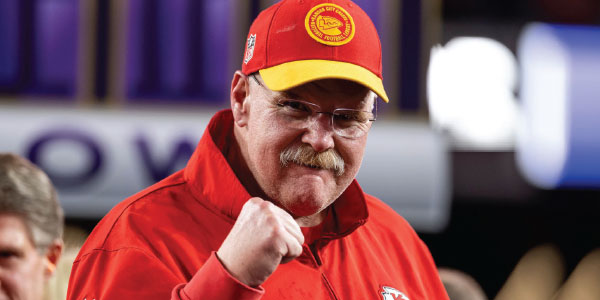
The new single-terminal Kansas City International Airport is set to open next year. The $1.5 billion airport will replace the three-terminal facility built in 1972 for $250 million, characterized by Southwest Airlines president, Mike Van de Ven as “one of the best airports ever built”.
Also opened in 1972: The Truman Sports Complex. Its twin stadiums have been home ever since to Kansas City’s professional football and baseball teams — the Chiefs and Royals, respectively.
Both stadiums have undergone renovations, and Arrowhead “remains one of the NFL’s premier stadiums,” wrote Charles Goldman last month. MLB.com calls Kauffman Stadium “one of the game’s most beautiful ballparks.”
Both teams’ leases at Truman expire in 2031, and they’re considering renewing their respective leases or building new stadiums downtown or even in Kansas. Over 60 percent of fans recently polled, however, favor both teams staying put.
KCI’s and the stadiums’ inaugural year saw a beloved regional landmark disappear. In summer 1972, demolition commenced on the downtown Emery Bird Thayer building. Deemed a historical and architectural jewel, and listed on the National Register of Historic Places, the six-story Victorian heirloom came down to make way for “pizzazz.”
The storied “king of Petticoat Lane” had closed and was acquired by R. Crosby Kemper Jr. He planned to build a multi-story bank headquarters. What (downtown) really needs is pizzazz, he told reporters in 1973.
Kemper came to regret razing rather than repurposing the magnificent old building. “He … was sorry he tore the building down,” Kemper’s son, R. Crosby Kemper III told The Star in 2021.
Many mourned its demise. “It was one of downtown’s most important pieces of architecture,” The Star’s art and architecture critic wrote. “When the wreckers pounded the building into dust … people realized that something important was lost.”
“Emery, Bird, Thayer has such a rich history,” says local architectural historian, Cydney Millstein. “Even if you didn’t like the architecture, chances are you loved the store.”
“The memory of (it) … still haunts those who loved that giant antique,” wrote The Star’s real estate editor in 1985. “It has often been lamented that if only it could have survived another 10 years, it would still be here today.”
Its demolition and that of the old Board of Trade Building regenerated the preservation movement in Kansas City, say preservationists and historians. While pointing out that not all old buildings are worth saving, they lament, “It’s astounding what we’ve lost.”
To avoid buyer’s remorse akin to Kemper’s, will Chiefs and Royals leaders contemplating their next address ask themselves why move? What will it change, improve or fix? Will the benefits justify the cost?
Most Americans – 71 percent, according to Pew Research – have traveled abroad. Many of us who have, marvel at the untouchable ancient ruins and historic structures reverently preserved in other countries. Why then, do we continually demolish our iconic artifacts?
¿Indiferente hacia nuestro patrimonio arquitectónico?
El nuevo Aeropuerto Internacional de Kansas City de una sola terminal está programado para abrir el próximo año. El aeropuerto de $1.5 mil millones reemplazará la instalación de tres terminales construida en 1972 por $250 millones, caracterizada por el presidente de Southwest Airlines, Mike Van de Ven, como “uno de los mejores aeropuertos jamás construidos”.
¿Otro lugar que también abrió en 1972? El Complejo Deportivo Truman. Sus estadios gemelos han sido desde entonces el hogar de los equipos profesionales de fútbol y béisbol de Kansas City, los Chiefs y Royals, respectivamente.
Ambos estadios han sido renovados y el Arrowhead “sigue siendo uno de los principales estadios de la NFL”, escribió Charles Goldman el mes pasado. MLB.com describe al Kauffman Stadium como “uno de los estadios de béisbol más hermosos del juego”.
Los contratos de alquiler de ambos equipos en Truman vencen en 2031, y están considerando renovar sus respectivos contratos de alquiler o construir nuevos estadios en el centro o incluso en Kansas. Sin embargo, más del 60 por ciento de los fanáticos encuestados recientemente están a favor de que ambos equipos se queden en los lugares actuales.
El año inaugural de KCI y los estadios vio desaparecer un hito regional querido. En el verano de 1972, comenzó la demolición del edificio Emery Bird Thayer en el centro de la ciudad. Considerada una joya histórica y arquitectónica, e incluida en el Registro Nacional de Lugares Históricos, la reliquia victoriana de seis pisos se vino abajo para dar paso a un “dinamismo”.
El famoso “rey de Petticoat Lane” había cerrado y fue adquirido por R. Crosby Kemper Jr. Planeaba construir una sede bancaria de varios pisos. Lo que (el centro) realmente necesita es dinamismo, dijo a los periodistas en 1973.
Kemper llegó a lamentar haber demolido en lugar de reutilizar el magnífico edificio antiguo. “Él… lamentó haber derribado el edificio”, dijo el hijo de Kemper, R. Crosby Kemper III, a The Star en 2021.
Muchos lloraron su desaparición. “Era una de las piezas arquitectónicas más importantes del centro”, escribió el crítico de arte y arquitectura de The Star. “Cuando los demoledores convirtieron el edificio en polvo… la gente se dio cuenta de que se había perdido algo importante”.
“Emery, Bird, Thayer tiene una historia tan rica”, dice la historiadora arquitectónica local, Cydney Millstein. “Incluso si no te gustaba la arquitectura, lo más probable era que te gustara la tienda”.
“El recuerdo de (eso)… todavía persigue a aquellos que amaban esa antigüedad gigante”, escribió el editor de bienes raíces de The Star en 1985. “A menudo se ha lamentado que si hubiera podido sobrevivir otros 10 años, todavía estaría aquí hoy”.
Su demolición y la del antiguo edificio de la Junta de Comercio regeneraron el movimiento de preservación en Kansas City, dicen conservacionistas e historiadores. Si bien señalan que no vale la pena salvar todos los edificios antiguos, se lamentan: “Es asombroso lo que hemos perdido”.
Para evitar el remordimiento del comprador similar al de Kemper, ¿se preguntarán los líderes de Chiefs y Royals al contemplar su próxima dirección por qué mudarse? ¿Qué cambiará, mejorará o arreglará? ¿Los beneficios justificarán el costo?
La mayoría de los estadounidenses, el 71 por ciento, según Pew Research, han viajado al extranjero. Muchos de nosotros que lo hemos hecho, nos maravillamos con las ruinas antiguas intocables y las estructuras históricas preservadas con reverencia en otros países. ¿Por qué, entonces, demolimos continuamente nuestros artefactos icónicos?









